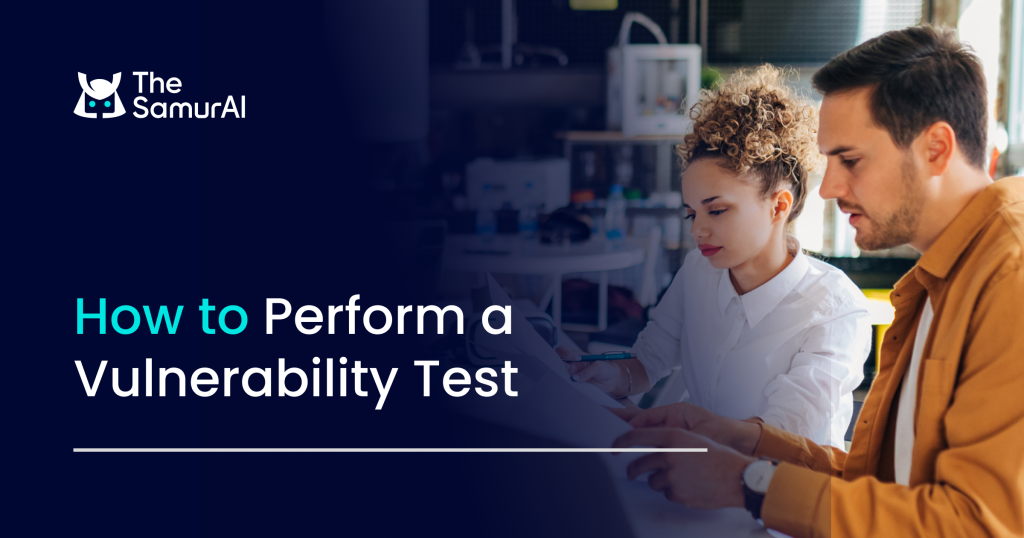The Importance of Vulnerability Assessments in 2025
Cyber threats in 2025 are faster, smarter, and more dangerous than ever. From AI-powered ransomware to supply chain exploits, attackers are constantly looking for weak spots. That’s why businesses in New York, New Jersey, and beyond can’t afford to wait until a breach happens. A vulnerability assessment helps you spot risks in your IT systems, applications, and processes—before cybercriminals do.
At The SamurAI, we believe assessments shouldn’t feel overwhelming. Think of them as regular health check-ups for your digital environment.
🔍 What Is a Vulnerability Assessment?
In simple terms, a vulnerability assessment is a structured process where we scan and analyze your IT systems to identify weaknesses that attackers might exploit. Unlike penetration testing, which simulates an attack, vulnerability assessments focus on finding, ranking, and fixing risks.
If you’re new to this, don’t worry—SamurAI makes it simple by walking you through each step.
⚡ Why Vulnerability Assessments Matter in 2025
- AI-driven attacks exploit overlooked vulnerabilities faster than ever.
- Remote and hybrid work expands attack surfaces across endpoints, cloud, and networks.
- Compliance regulations like HIPAA, PCI-DSS, NYDFS require continuous monitoring and reporting.
- Third-party/vendor risks make supply chain assessments critical.

Steps to Perform a Comprehensive Vulnerability Assessment
1. Define Scope and Objectives
- Identify systems, networks, applications, and cloud services for assessment.
- Include endpoints, IoT devices, and SaaS applications—common blind spots in 2025.
- Align objectives with compliance standards (HIPAA, SOC 2, PCI, etc.).
2. Asset Inventory & Classification
- Build a real-time inventory of all assets: servers, endpoints, containers, APIs, cloud workloads.
- Classify assets by criticality and sensitivity (e.g., patient data, financial records).
- Use automated discovery tools integrated with SIEM/SOAR platforms.
3. Vulnerability Scanning
Use advanced scanning tools to detect weaknesses. Learn more about tools like Qualys, Nessus, OpenVAS, and Rapid7 InsightVM:
- Scan operating systems & software versions
- Check cloud misconfigurations (AWS, Azure, GCP)
- Evaluate containers (Kubernetes, Docker)
- Test web applications & APIs
- Ensure authenticated scans for deeper visibility
4. Threat Intelligence Integration
- Correlate findings with real-world threat feeds.
- Prioritize vulnerabilities actively exploited in the wild.
- Apply AI-driven analytics for predictive risk scoring.
5. Risk Prioritization & Scoring
- Use CVSS (Common Vulnerability Scoring System) as baseline.
- Factor in exploit availability, business impact, asset criticality.
- Rank vulnerabilities: High, Medium, Low.
6. Manual Verification & Penetration Testing
- Validate critical vulnerabilities manually.
- Perform penetration tests to simulate real-world attack chains.
- Filter false positives.
7. Remediation & Mitigation
- Apply patches and configuration fixes.
- Implement compensating controls for unpatchable systems.
- Use automated patch management for scale.
8. Reporting & Documentation
- Provide executive-friendly summaries.
- Include technical details, CVSS scores, remediation guidance.
- Document evidence for compliance audits.
9. Continuous Monitoring
- Vulnerability assessment is ongoing.
- Integrate continuous management with SIEM/XDR.
- Schedule quarterly or monthly assessments for critical NY/NJ industries.
📍 Regional Focus: NY & NJ Vulnerability Assessment
Businesses in these states face unique regulatory pressures:
- New York DFS Cybersecurity Regulation (23 NYCRR 500) requires risk assessments & continuous monitoring.
- Healthcare providers in NJ must comply with HIPAA & HITECH.
- Financial institutions maintain SOC 2, PCI-DSS, ISO 27001 compliance.

Partnering with The SamurAI ensures assessments meet regional compliance standards while addressing AI-driven threats.
✅ Best Practices for 2025
- Use AI-driven vulnerability management for real-time detection.
- Include cloud-native & containerized environments.
- Align remediation with Zero Trust principles.
- Conduct third-party/vendor risk assessments.
- Train staff to recognize assessment findings.
📌 Get Started with The SamurAI
A vulnerability assessment doesn’t have to feel like a massive project. With the right partner, it becomes a manageable, repeatable process that protects your business year-round. Protect your business with expert cybersecurity services by booking a consultation today.
